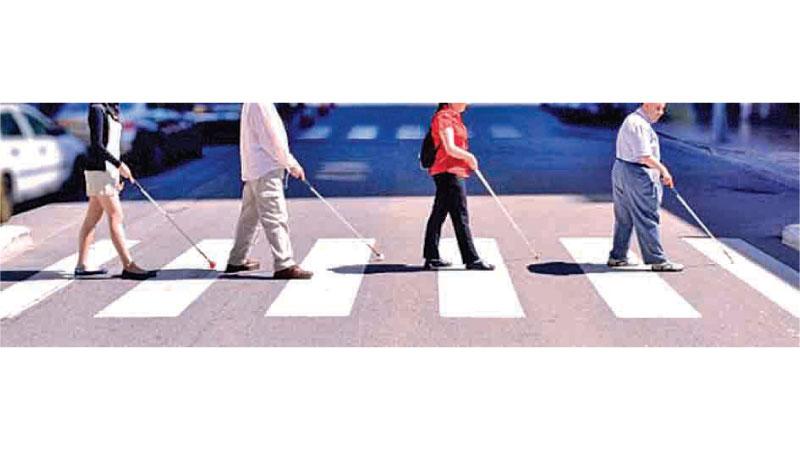
October 15, 2019, marks 98 years since the white cane was introduced.
The white cane has become a symbol associated with blind or visually impaired persons. Some persons may have minimal of sight, but are nevertheless required to carry a white cane. The traditional cane of the blind was earlier known as the ‘Hoover cane’ after Dr. Richard Hoover who designed it primarily as a mobility tool.
In 1921, an English photographer from Bristol, James Biggs, who lost his sight in an accident painted his walking stick white to make it more visible to vehicular traffic and all others on the road. In 1931 France launched a national white stick movement for blind people followed by the USA. From 1964, the day was set aside for national observance around the world as White Cane Safety Day to celebrate the white cane as an important symbol of blindness and tool of independence.International White Cane Day is a day to celebrate the achievements of people who are blind or have low vision and the white cane is an important symbol of blindness and tool of independence. Several ceremonies will be held in Sri Lanka too mark the day.
Have you ever helped a blind person or thought of lending a helping hand but wondered how to get about it? It is crucial for all those of us blessed with sight to provide and promote a safe environment for the visually impaired.
Though the traditional white cane is designed primarily as a mobility tool to detect objects in the path of the user, blind people treat it more like an extension of their bodies. It is also a message to others that the user is visually impaired. For example, if you are in a vehicle and see a person with a white cane, it is advisable to slow down until it is clear what the white cane user intends to do (cross the road, walk along the same path or is someone coming to his or her assistance?).
That last point is worth exploring. Whenever we see a blind person, our first instinct is to rush out, grab him or her by the arm and then assist him. A recent survey in Australia has shown two thirds of people who use white canes have been unexpectedly handled by a member of the public, a timely topic and focus of International White Cane Day.
Conducted by Guide Dogs New South Wales/Australian Capital Territory, the survey revealed 64 percent of people who use white canes have been grabbed or handled by a sighted person without first seeking permission.
“The problem when someone grabs you without asking first is, not only is it an invasion of space, but that it causes confusion and disorientation. I know most people are well-meaning, but they don’t realise that they might actually be making it harder for me to navigate public spaces or even simply putting me in an awkward situation,” one white cane user told the survey takers.
By grabbing a person with a white cane by the arm to help them onto public transport or across the road - without their consent or prior knowledge - you can disorientate them or break the concentration they are using to follow a path. Thus the most polite, simple, effective and helpful thing you can do is directly ask a person using a white cane if they need assistance before trying to help. This is the preferred and the best way members of the public can assist them.
We have to remember that people who are blind or have low vision are no different to anybody else in that they want to be active and independent and experience what their surroundings have to offer. That could be a walk to their local shop or it could be undertaking the trip of a lifetime to the other side of the world. For many people who are blind or have low vision, it’s their white cane and their orientation and mobility skills that allow them to do that.
So when you are driving or walking, remember that not all pedestrians will be able to see you and to be on the look-out for white canes and act accordingly. In many other countries, guide dogs can be seen assisting the blind, but here it is a rarity, as guide dogs are extremely expensive to source and to train. Some guide dog users may also carry a white cane for extra protection and safety.
However, if science and technology get their way, blindness could be a thing of the past. There already are rudimentary “artificial eyes” - essentially a camera wired to the brain – that help blind people recognize shapes and forms, if not acute images. These will progressively get more advanced until they can someday match or even exceed the performance of the natural human eye. But until then, we must do all we can to prevent blindness in the first place and give visually impaired persons more opportunities to ‘move forward’.
